Unprecedented discovery seems to defy fundamental astronomical theories
Ashley Strickland, CNN
Thu, October 5, 2023
Editor’s Note: Sign up for CNN’s Wonder Theory science newsletter. Explore the universe with news on fascinating discoveries, scientific advancements and more.
New images from the James Webb Space Telescope have revealed surprising pairs of planet-like objects in the Orion Nebula that have never been detected before.
The Orion Nebula, a glowing cloud of dust and gas, is one of the brightest nebulae in the night sky and identifiable as the sword in the Orion constellation. Located 1,300 light-years from Earth, the nebula has long presented astronomers with a wealth of celestial objects to study, including planet-forming disks around young stars and brown dwarfs, or objects with a mass between that of planets and stars.
Astronomers used Webb’s near-infrared camera, called NIRCam, to capture mosaics of the Orion Nebula in short and long wavelengths of light, revealing unprecedented details and unexpected discoveries.
When astronomers Samuel G. Pearson and Mark J. McCaughrean studied the short-wavelength image of the Orion Nebula, they zoomed in on the Trapezium Cluster, a young star-forming region that’s about 1 million years old, filled to the brim with thousands of new stars. In addition to the stars, the scientists spotted brown dwarfs, which are too small to kick-start the nuclear fusion at their cores to become stars. Brown dwarfs have a mass that is below 7% the mass of the sun.
On the hunt for other low-mass isolated objects, the astronomers found something they had never seen: pairs of planet-like objects with masses between 0.6 and 13 times the mass of Jupiter that appear to defy some fundamental astronomical theories.
The scientists dubbed them Jupiter Mass Binary Objects, or JuMBOs.
“Although some of them are more massive than the planet Jupiter, they will be roughly the same size and only slightly larger,” said Pearson, a European Space Agency research fellow at the European Space Research and Technology Centre in the Netherlands.
The astronomers found 40 pairs of JuMBOs and two triple systems, all on wide orbits around one another. Although they exist in pairs, the objects are typically about 200 astronomical units apart, or 200 times the distance between Earth and the sun. It can take between 20,000 and 80,000 years for the objects to complete an orbit around each other.
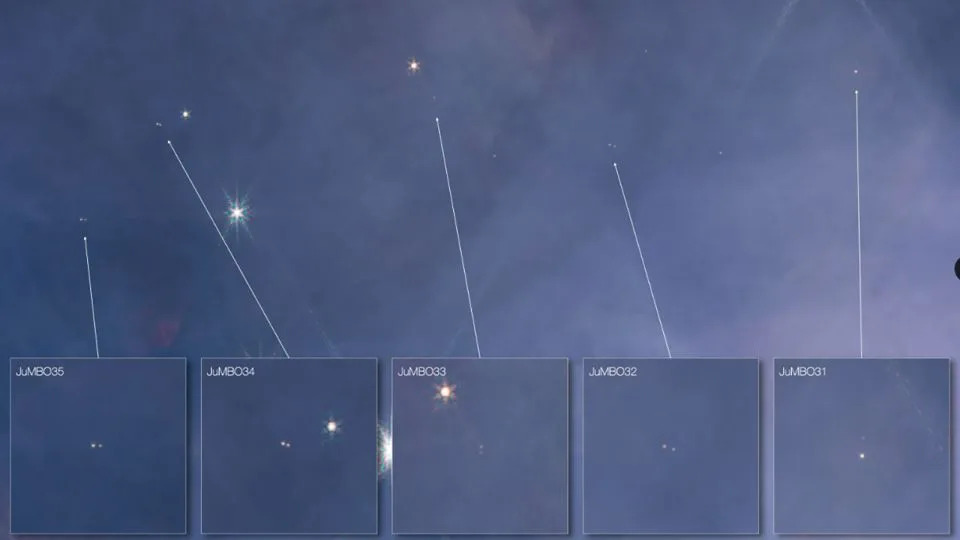
Five JuMBOs can be seen in this image, which zoomed in on the finer details of the larger Webb portrait of the Trapezium Cluster in the Orion Nebula. - ESA
The objects’ temperatures range from 1,000 degrees Fahrenheit (537 degrees Celsius) to 2,300 F (1,260 C), Pearson said. The gaseous objects are young, astronomically speaking — about 1 million years old. Our solar system, in comparison, is 4.57 billion years old.
“We are halfway through the life of the sun, so these objects in Orion are 3-day-old babies,” said McCaughrean, senior adviser for science and exploration at the European Space Agency. “They’re still quite luminous and warm because the energy they have when they get created still allows them to glow, which is how we can see these things in the first place.”
McCaughrean and Pearson have written two research papers based on their discoveries in the Orion Nebula using the Webb telescope. The studies have been submitted to academic journals for publication, and the preliminary findings are available on a preprint site called arXiv. But many questions about JuMBOs remain — including how they came to be in the first place.
JuMBOs: Upending the rules of astronomy
Stars form from giant clouds of gas and dust that collapse beneath gravitational forces. This process continues as disks of gas and dust swirl around the stars, giving rise to planets. But no existing theories explain how the JuMBOs formed, or why they’re present in the Orion Nebula, McCaughrean said.
For instance, some may consider the JuMBOs to be like rogue planets, or objects of planetary mass that freely travel through space without orbiting stars. But many rogue planets begin by orbiting stars before being ejected, and it would be hard to explain how pairs of them were kicked out at the same time while remaining gravitationally connected to each other.
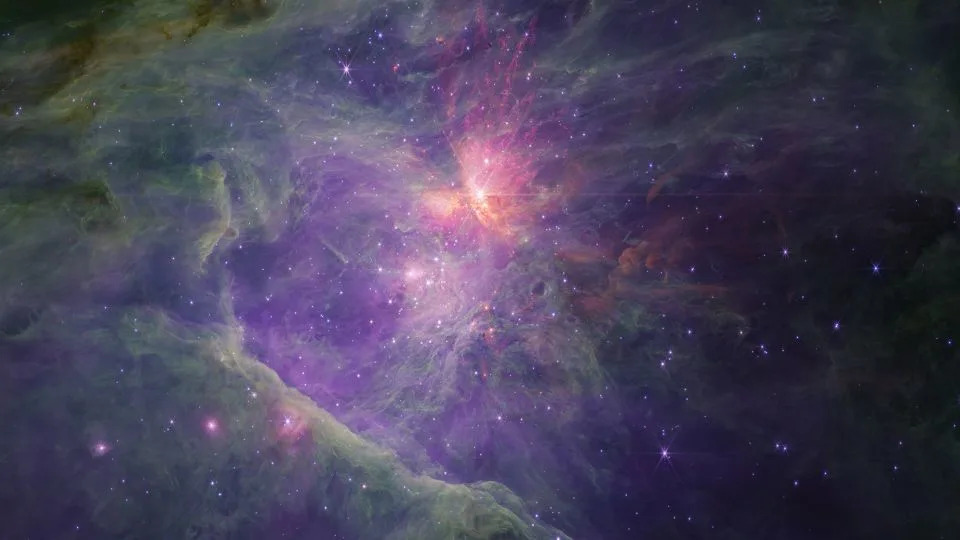
This Webb image shows the full survey of the inner Orion Nebula and Trapezium Cluster, captured in long wavelengths of light. - NASA/ESA/CSA
“Scientists have been working on theories and models of star and planet formation for decades, but none of them have ever predicted that we would find pairs of super low mass objects floating alone in space — and we’re seeing lots of them,” Pearson said. “The main thing that we learn from this is that there is something fundamentally wrong with either our understanding of planet formation, star formation, or both.”
The Orion Nebula is a favorite observational target of astronomers, and the larger and more sophisticated telescopes become, the more objects are revealed within the nebula, McCaughrean said.
“While the objects we are looking at are really faint, they are brightest in the infrared, so that (is) where you have the best chance of detecting them,” Pearson said via email. “JWST is the most powerful infrared telescope that has ever been built and these observations simply wouldn’t be possible with any other telescope.”
Observations of the nebula scheduled for early 2024 could provide more insight into the atmospheric compositions of the JuMBOs, Pearson said. The researchers also want to uncover more details about the objects, including making precise measurements of their masses.
Meanwhile, other research focused on different star-forming regions could reveal whether JuMBOs are elsewhere beyond the Orion Nebula.
“The main question is, ‘What?! Where did that come from?’” Pearson said. “It’s just so unexpected that a lot of future observations and modelling are going to be needed to explain it.”
James Webb Space Telescope spots dozens of physics-breaking rogue objects floating through space in pairs
Ben Turner
Thu, October 5, 2023
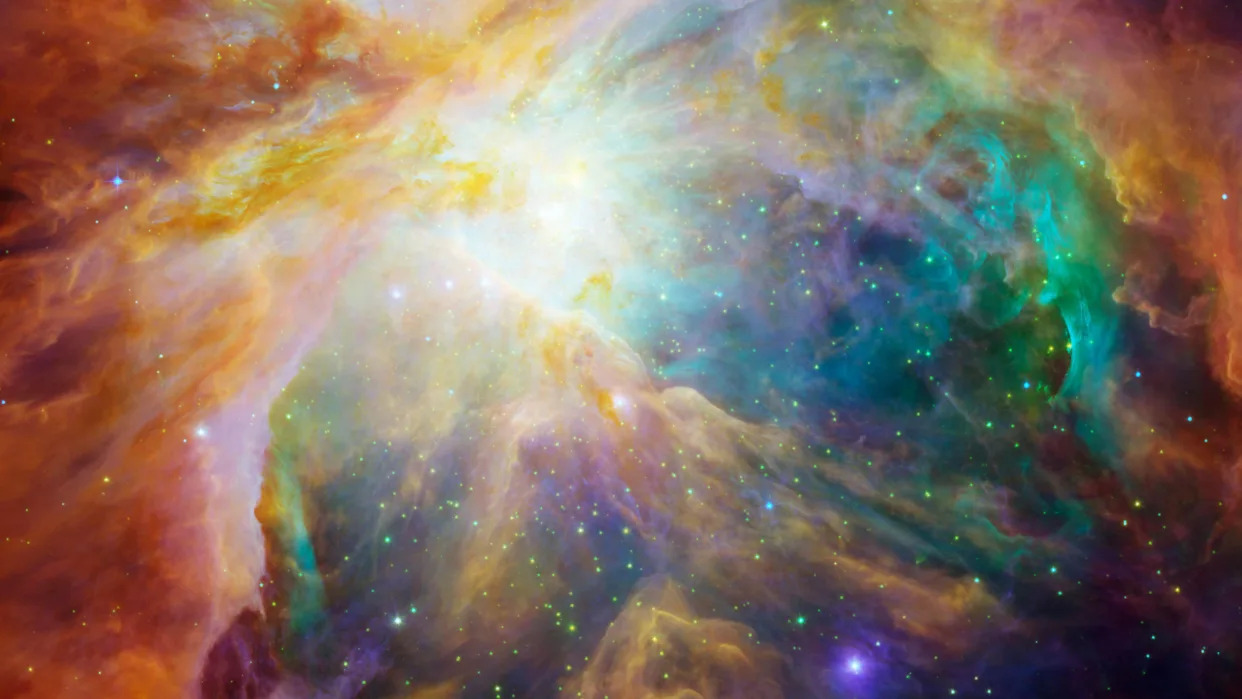
An image of the Orion Nebula captured by the Hubble and Spitzer space telescopes.
The James Webb Space Telescope has discovered dozens of seemingly physics-breaking rogue objects floating through space in pairs, and scientists aren't sure how they can exist.
Freely drifting through the Orion Nebula, the Jupiter-mass binary objects, or "JuMBOs" exist in 42 pairs. Each object orbits its partner at up to 390 times the distance between Earth and the sun.
The JuMBOs are too small to be stars, but as they exist in pairs, they are unlikely to be rogue planets ejected from solar systems. Yet somehow they still formed. The researchers published their findings Oct. 2 on the preprint database arXiv and have not yet been peer-reviewed.
Related: James Webb telescope's observations of 'impossible' galaxies at the dawn of time may finally have an explanation
"How pairs of young planets can be ejected simultaneously and remain bound, albeit weakly at relatively wide separations, remains quite unclear," the researchers wrote in the paper. They suggest that "perhaps a new, quite separate formation mechanism," could be responsible for the odd couples' creation.
The rogue pairs are drifting through the Orion Nebula, a star-forming region roughly 1,344 light-years from Earth that features plumes of stormy gas pierced by beams of starlight. Observations from ground-based telescopes had previously alerted the researchers that other mysterious objects were also lurking in the gas cloud. Then, follow-up observations made with the James Webb Space Telescope finally spotted them.
The researchers' analysis revealed the strange objects are gas giants that are roughly a million years old with temperatures around 1,300 degrees Fahrenheit (700 degrees Celsius). Their billowing cloaks primarily consist of carbon monoxide, methane and steam.
Yet what truly baffled the astronomers is that many of the objects came in pairs.
Stars can take tens of millions of years to transform from collapsing clouds of cooling dust and gas to gently glowing protostars, before eventually coalescing into gigantic orbs of fusion-powered plasma like our sun.
RELATED STORIES
—James Webb telescope detects the earliest strand in the 'cosmic web' ever seen
—The James Webb Telescope detected the coldest ice in the known universe — and it contains the building blocks of life
—32 jaw-dropping James Webb Space Telescope images
As a star forms, it spins the gas cloud it's feeding on, weaving a disk of sprinkled leftovers from which planets can form. Sometimes this disk can prematurely split, seeding a glob of material that births a second star beside the first to create a binary system.
The theoretical lower limit for an object to form from star-like cloud-collapse is roughly three Jupiter masses — anything smaller should be born tethered to a star. This makes the existence of these pairs (which each have masses close to one Jupiter) hard to explain. They are possibly ejected planets, but how their binary relationship survived being spat out from their solar system is unclear. Alternatively, they could be a new category of failed stars, but how they became so small is a mystery.
"The ensemble of planetary mass objects and JuMBOs that we see in the Trapezium Cluster might arise from a mix of both of these 'classical' scenarios, even if both have significant caveats," the researchers wrote. "Or perhaps a new, quite separate formation mechanism, such as a fragmentation of a star-less disk, is required."
‘Planet Nine’ hidden world at the edge of our solar system could actually be something else, scientists say
Andrew Griffin
Fri, October 6, 2023
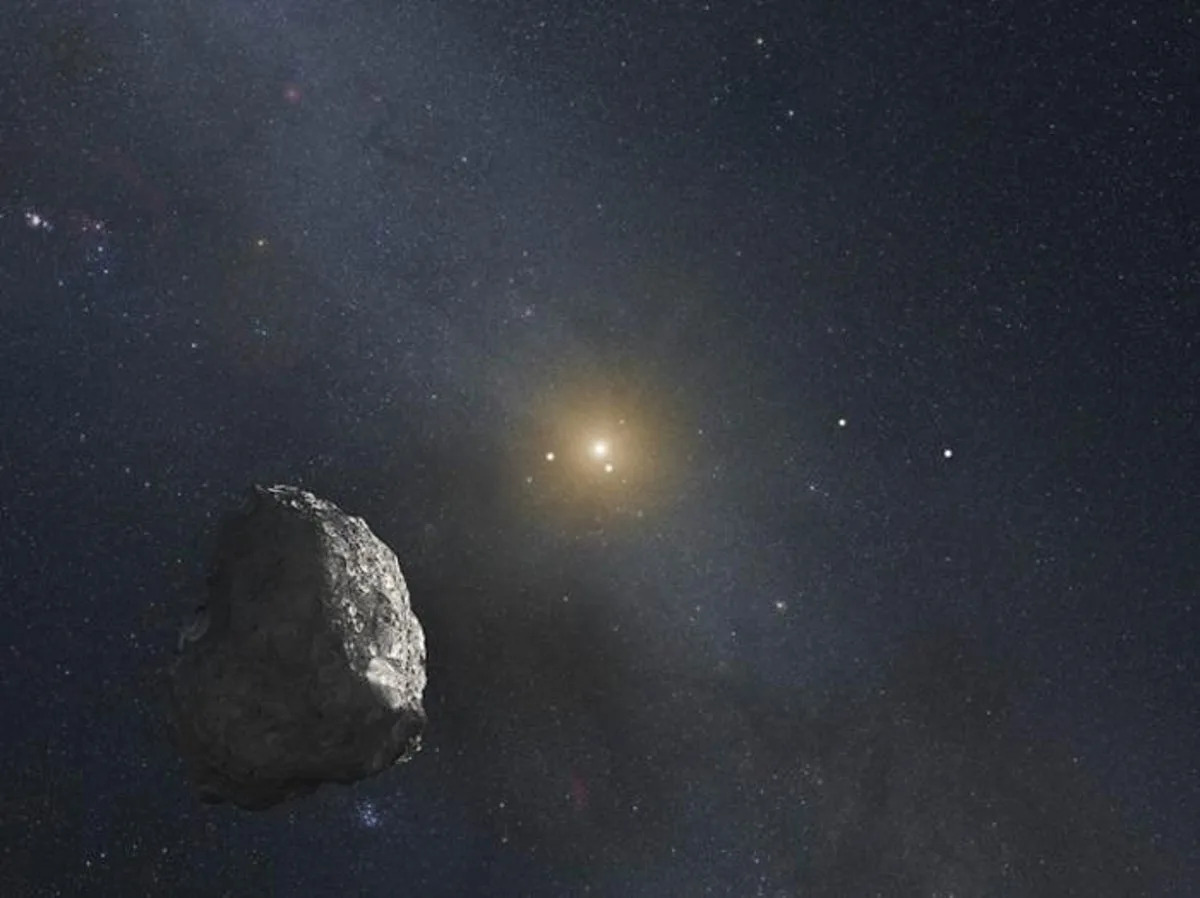
A supposed “planet nine” that lies hidden at the edge of our solar system could actually be something else entirely, according to scientists.
The unexplained movement of objects at the edge of our solar system has led some to propose that they are being influenced by another world, hidden in the dark distance of our planetary neighbourhood, that they have referred to as planet nine. Objects at the far reaches of the solar system behave as if they are being pulled around by an object that we cannot see, which is probably another planet, they suggest.
But a new study by researchers Harsh Mathur, a professor of physics at Case Western Reserve University, and Katherine Brown, an associate professor of physics at Hamilton College, say that those movements are instead the result of a modified law of gravity.
The scientists plotted what would happen if the objects were being governed by a theory known as Modified Newtonian Dynamics or MOND. That suggests that Newton’s usual gravity only works up to a point – that in the outer regions of galaxies, for instance, gravity behaves in unusual ways.
They found that the data lined up, and applying the MOND theory to the existing observations seemed to predict them exactly. “The alignment was striking,” said Professor Mathur.
They note that the findings do not necessarily rule out planet nine – or another explanation for what is going on. Some researchers have suggested other explanations for what the objects could be, for instance, while others have suggested that the claimed effect is just the result of when the distant objects tend to be observed.
“Regardless of the outcome, this work highlights the potential for the outer solar system to serve as a laboratory for testing gravity and studying fundamental problems of physics,” said Professor Brown.
The findings are reported in a paper, ‘Modified Newtonian Dynamics as an Alternative to the Planet Nine Hypothesis’, published in The Astronomical Journal.
Potential discovery of a dozen objects beyond Pluto could reveal a new section of the solar system we never knew about
Harry Baker
Thu, October 5, 2023
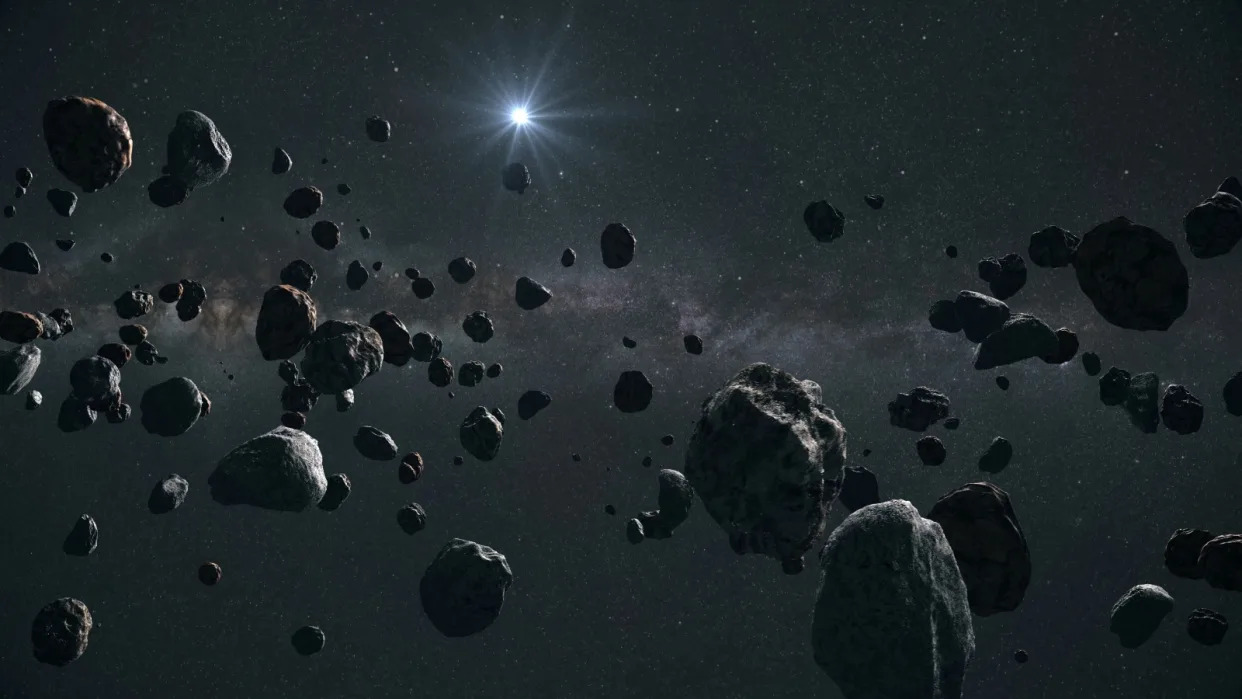
A large group of asteroids with the sun in the distance.
Researchers may have detected a dozen new, large objects beyond the Kuiper Belt, which suggests that there is lots more stuff in the solar system than we realized. It could even hint that there is a "second Kuiper Belt" further out toward the edge of our stellar neighborhood, Science.org reported.
The sun's influence reaches much further out into space than the eight planets that orbit around it. Beyond Neptune, the solar system stretches out to around 100 astronomical units (AU), which is 100 times the distance between Earth and the sun. For context, the most distant planet from the sun, Neptune, is roughly 30 AU from our home star.
Beyond the edge of the solar system, or heliopause, lies the Oort Cloud — a reservoir of comets and asteroids that are loosely contained by the sun's gravity — that stretches to at least 1,000 AU from the sun, and likely even further.
But a majority of the largest known asteroids, comets and other large objects that lie beyond Neptune's orbit are contained within the Kuiper Belt, which stretches between 30 and 50 AU from the sun. Famous residents of the Kuiper Belt include the dwarf planet Pluto and the double-lobed object Arrokoth — the most distant object visited by a spacecraft. Planet Nine, if it exists, would also lurk somewhere within the Kuiper Belt. Until now, very few massive objects in the solar system have been found beyond the Kuiper Belt.
Related: What does the edge of the solar system look like?
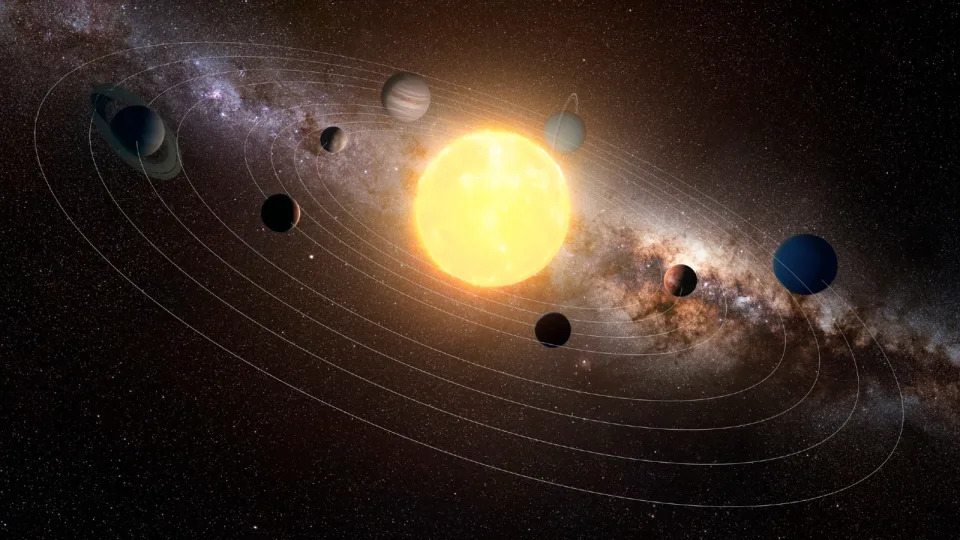
Researchers discovered the 12 potential massive objects around 60 AU from the sun while searching for potential new targets for NASA's New Horizons spacecraft — the probe that studied Pluto and Arrokoth up close, which is now around 57 AU from the sun as it continues to head toward the heliopause. The team used artificial intelligence to rapidly sift through what would otherwise have been weeks worth of data captured by the Subaru Telescope on Hawaii's Mauna Kea volcano.
The researchers presented their findings at the 54th Lunar and Planetary Science Conference, which was held in Houston, Texas in mid-March. (The findings have not yet been peer-reviewed or accepted for publication.)
The team is not surprised by their findings. Compared to other observed star systems, the solar system is "bloody small," study lead author Wesley Fraser, an astrophysicist with the National Research Council Canada, told Science. The newly detected objects suggest that the solar system is much more massive, which would fit better with what astronomers know about other star systems, he added.
The findings could also support data collected by New Horizons, which has continually been bombarded by dust as it ventures deeper into space, study co-author Alan Stern, the principal investigator of the New Horizons mission, told Science. "And the simplest explanation for that is that there is more stuff out there that we haven't detected," he added.
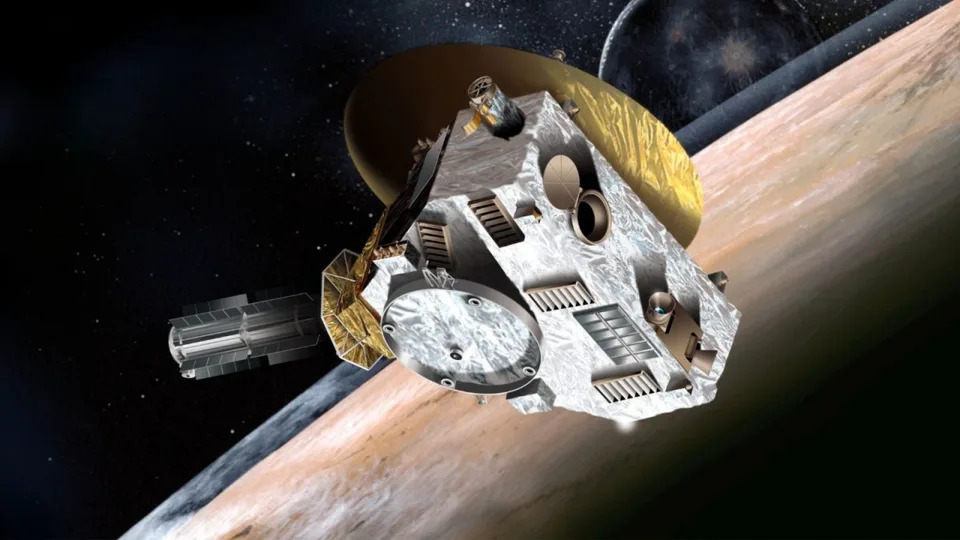
The 10 AU distance between the Kuiper Belt and the newly observed objects also suggests that they are being pulled away from the belt by something more massive, which could be another more distant Kuiper Belt full of unknown objects, the researchers said.
Related: What's the maximum number of planets that could orbit the sun?
But not everyone is convinced by the new findings.
In June, a similar survey using the Víctor M. Blanco Telescope in Chile observed a different patch of sky, but only turned up one object beyond 50 AU.
related stories
—'Impossible' new ring system discovered at the edge of the solar system, and scientists are baffled
—Brand-new mini 'moon' found lurking in the outer solar system
—'Farfarout' is most distant object in our solar system. But it's not Planet Nine.
"If there really is a new belt, that's a super exciting thing," survey lead Pedro Bernardinelli, an astronomer at the University of Washington, told Science. But "why are we not seeing these things?" he asked. It's possible that his team got "unlucky," Bernardinelli added, but the odds are long. (The results of this survey have also not yet been peer-reviewed).
The study researchers are currently sorting through more recent data they have collected since their discovery, which they hope will confirm their findings. But if they come up empty handed there is a chance the New Horizons spacecraft could still find these objects, after its current mission was extended to the end of 2029 last week, Live Science's sister site Space.com reported.
Mystery behind massive star suddenly vanishing decoded
Vishwam Sankaran
Thu, October 5, 2023
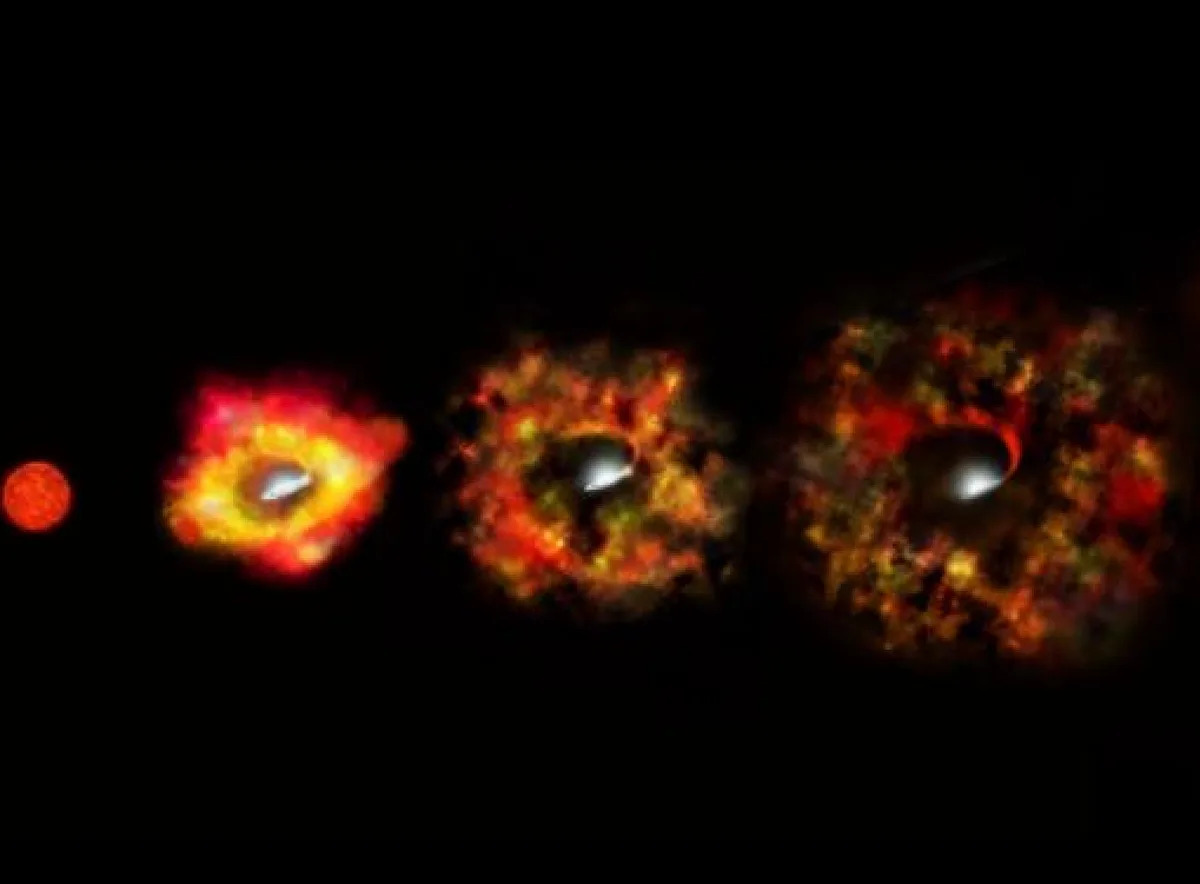
Mystery behind massive star suddenly vanishing decoded
The James Webb Space Telescope has helped demystify the strange 2009 observation of a giant star about 25 times more massive than the sun that appeared to disappear from existence.
In 2009, astronomers observed what they believed was a giant star about 25 times more massive than the sun, increasing its brightness to a million suns as if it was about to explode into a supernova, then suddenly fading instead of exploding.
However, later observations using the Hubble and the Spitzer space telescope as well as the Large Binocular Telescope (LBT) could not spot the star N6946-BH1, now considered a failed supernova.
Astronomers suspected that the star – 22 million light-years away – may have collapsed to become a black hole instead of triggering a supernova.
Stars are typically considered to form a black hole only after they go supernova (SN), but this observation of N6946-BH1 hinted that stars may fall short of a supernova and still make a black hole.
“N6946-BH1 is the first plausible candidate for a failed supernova (SN), a peculiar event in which a massive star disappears without the expected bright SN, accompanied by collapse into a black hole (BH),” scientists said.
Researchers suspected this observation may help to explain why we don’t see supernovae from the most massive stars.
However, new observations using instruments aboard the Webb telescope – described in a preprint posted in the arXiv server – point to a bright infrared source that is likely from a dust shell remnant surrounding the original star.
While this could be due to material ejected from the star, researchers say the observation may have also been from material falling into a black hole.
The yet-to-be peer-reviewed research reports not one remnant object in the position of the star, but three, making the failed supernova model less likely.
Researchers now suspect that the 2009 brightening observation was rather likely caused by two stars merging.
The brightening they say may have been due to two stars merging, which then faded.
Researchers say the failed supernova model can still not be completely ruled out.
“At present, the interpretation of N6946-BH1 remains uncertain. The observations match expectations for a stellar merger, but theoretical ambiguity in the failed SN hypothesis makes it hard to dismiss,” scientists wrote in the study.
The findings, however, point to the potential of the Webb telescope to distinguish multiple sources millions of light years away.
Hubble Telescope just witnessed a massive intergalactic explosion and astronomers can't explain it
Keith Cooper
Fri, October 6, 2023
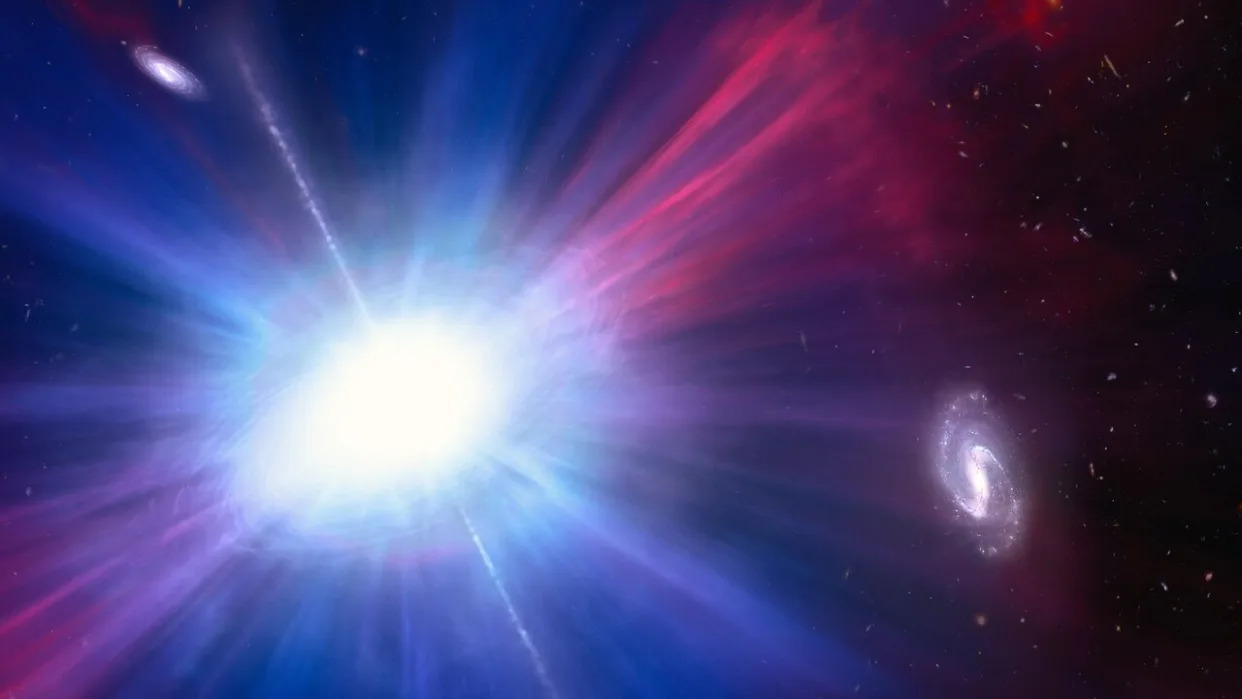
Hubble Telescope just witnessed a massive intergalactic explosion and astronomers can't explain it
A mysterious cosmic explosion created a brilliant flash of light in the space between two galaxies over 3 billion light-years away.
The optical flash, which was one of the brightest bursts of blue light in the universe but lasted only a few days, is the latest example of a rare breed of brief astronomical event called a luminous fast blue optical transient (LFBOT).
LFBOTs are a complete mystery. The first one to be discovered wasn't observed until 2018. Designated AT2018cow, it was positioned in the spiral arm of its galaxy 200 million light-years away. Nicknamed "the Cow," it was up to 100 times brighter than an ordinary supernova, and was also bright in radio waves, ultraviolet and X-rays. If it was a supernova, it behaved very oddly. Usually, a supernova stays bright for weeks, or even months, and has a recognizable spectrum. Yet the Cow faded after a few days.
Related: Did scientists solve the mystery of the super-bright exploding 'cow' in space?
Similar bursts of light are discovered at a rate of about one per year, and they are nicknamed after animals based on the last three letters in their designation. Other LFBOTs have been dubbed the Camel, the Koala and the Tasmanian Devil. This latest LFBOT, detected by the Zwicky Transient Facility at Palomar Observatory in California on April 10, is designated AT2023fhn and, consequently, has been nicknamed "the Finch."
After the LFBOT's initial detection, a preplanned sequence of observations by telescopes on the ground and in space was enacted. The Gemini South telescope in Chile measured the Finch's spectrum and found that it was 20,000 degrees Celsius (about 36,000 degrees Fahrenheit) — which is hot, but not as hot as some massive stars and certainly not as hot as a supernova. Redshift measurements place it about 3 billion light-years away, a huge distance at which only the Hubble Space Telescope could resolve its host galaxy.
And when it did, astronomers made a shocking observation: Finch was not in a galaxy at all.
All previous LFBOTs have been observed in the spiral arms of galaxies, but Hubble observed that the Finch was in intergalactic space, about 50,000 light-years from one large spiral galaxy and 15,000 light-years from a small galaxy.
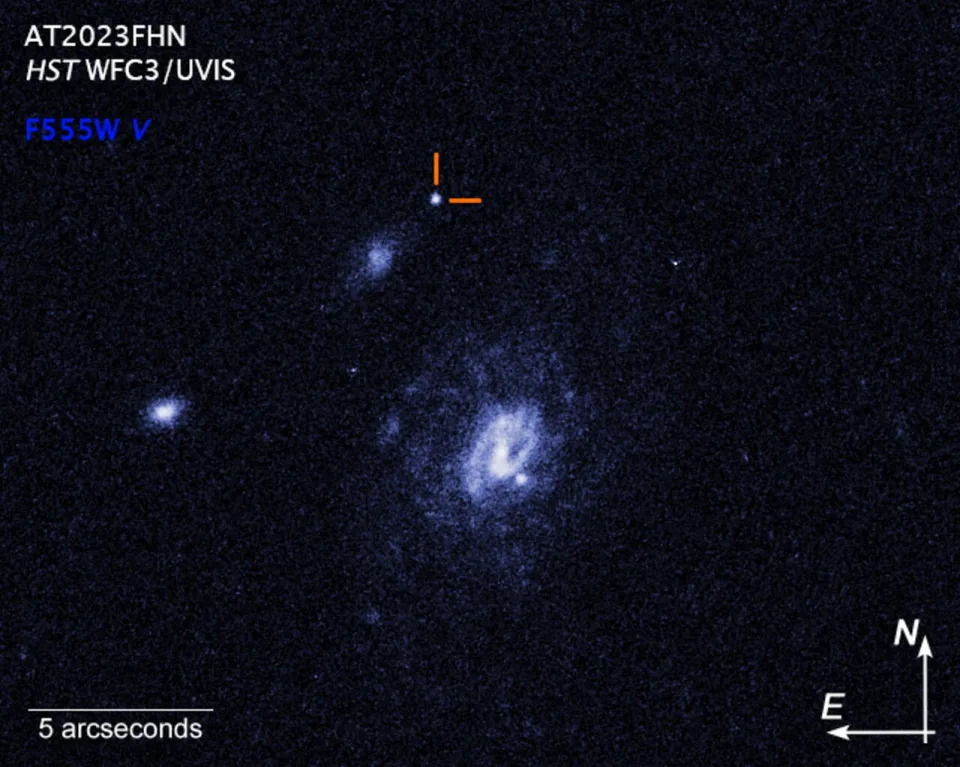
Its location would seem to go against the possibility that it could be the supernova of an exploding massive star. While there are rogue stars that get flung out of a galaxy and into intergalactic space following an encounter with a supermassive black hole, massive stars live only a few million years before going supernova, which is not enough time for a star to get all the way out there.
"The more we learn about LFBOTs, the more they surprise us," Ashley Chrimes, a research fellow at the European Space Agency and lead author of a new paper describing the recently observed LFBOT, said in a statement. "We've shown that LFBOTs can occur a long way from the center of the nearest galaxy, and the location of the Finch is not what we expect for any kind of supernova."
Chrimes and his team are focusing on two possible explanations. One is that the Finch was a flash of light caused by a star being ripped apart by an intermediate-mass black hole, which is a black hole with a mass between 100 and a few thousand times the mass of the sun. Intermediate-mass black holes are thought to reside at the cores of some globular star clusters, which lurk on the outskirts of galaxies. Chrimes plans to eventually use the powerful optics of the James Webb Space Telescope to search for any faint globular clusters in the same location as the Finch.
Related Stories:
—'Cow' supernova is brightest ever seen in X-ray observations
—Right before exploding, this star puffed out a sun's worth of mass
—Bizarre long gamma-ray burst came from merging stellar corpses
Alternatively, the Finch might have been a kilonova, which is the explosion resulting from the collision of two neutron stars (or sometimes between a neutron star and a black hole). The Laser Interferometer Gravitational-Wave Observatory was not operating at the time to detect any possible gravitational waves, or ripples in spacetime,from a neutron star merger (its latest observing run began in May). And at 3 billion light-years away, the Finch may have been too distant to detect anyway. No associated gamma-ray burst was detected.
"The discovery poses many more questions than it answers," Chrimes said. "More work is needed to figure out which of the many possible explanations is the right one."
The findings have been accepted for publication in the journal Monthly Notices of the Royal Astronomical Society.
No comments:
Post a Comment